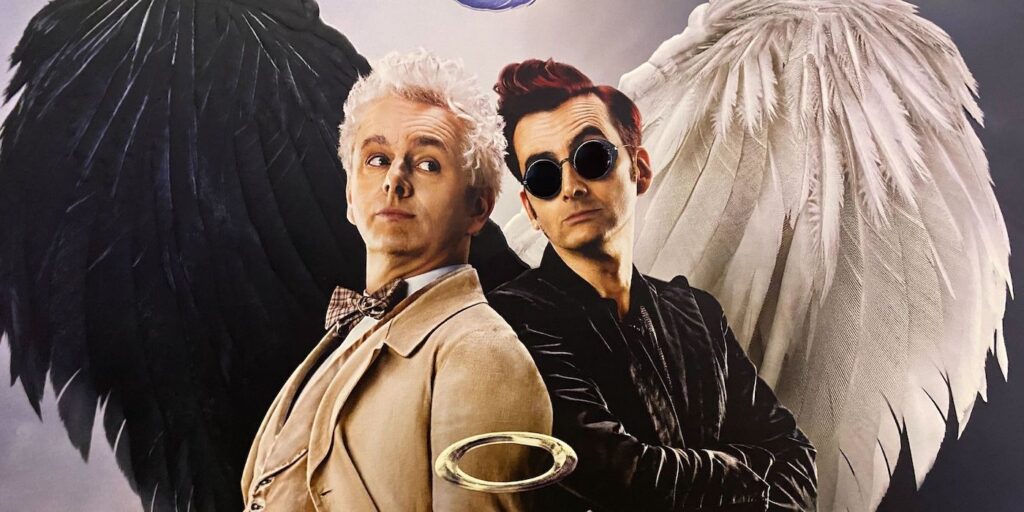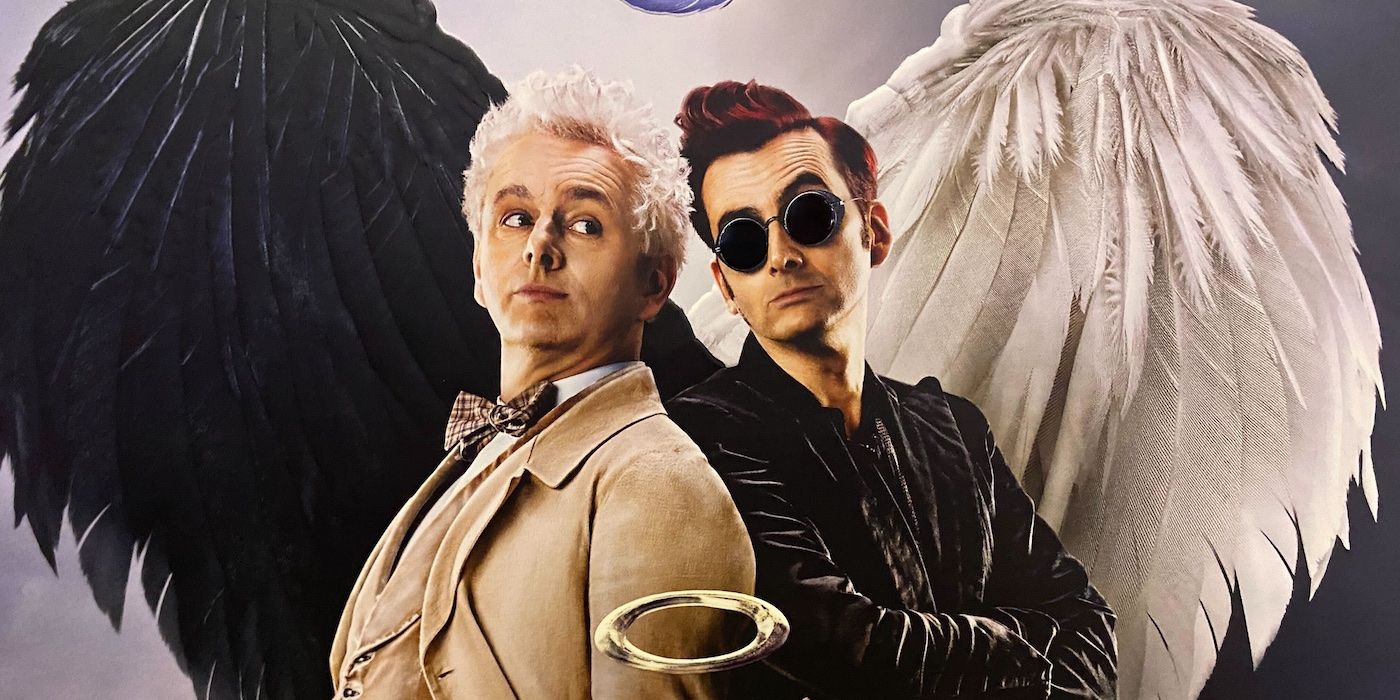
The Intriguing Duality of Demons in Good Omens: Exploring Crowley’s Character
Neil Gaiman and Terry Pratchett’s Good Omens presents a unique and humorous take on the battle between Heaven and Hell. At the heart of this narrative lies Crowley, a demon who, despite his infernal origins, displays a surprisingly complex and, dare we say, almost endearing personality. This article delves into the portrayal of demons in Good Omens, with a particular focus on Crowley’s character and the fascinating duality he embodies. We will explore how Good Omens challenges traditional perceptions of good and evil, and how Crowley, as a demon, becomes a pivotal figure in this moral ambiguity.
The Subversion of Archetypes in Good Omens
One of the most compelling aspects of Good Omens is its willingness to subvert established archetypes. Angels are not always paragons of virtue, and demons are not uniformly evil. This nuanced portrayal forces the audience to question preconceived notions and consider the possibility that morality is not as black and white as it seems. The story introduces the idea that even beings from opposing sides can find common ground and develop relationships, challenging the rigid boundaries typically associated with the concepts of good and evil.
Crowley: A Demon with a Twist
Crowley, originally Crawly, is a demon who has been on Earth since the dawn of humanity. He famously tempted Eve with the apple in the Garden of Eden. However, Crowley is not your typical fire-and-brimstone demon. He enjoys the finer things in life – fast cars, fashionable sunglasses, and Queen music – and has developed a certain fondness for humanity. This fondness is further complicated by his unlikely friendship with the angel Aziraphale.
His character is a masterclass in moral ambiguity. While he carries out his demonic duties, often with a sardonic wit, he rarely seems to take genuine pleasure in causing harm. In fact, he often goes to great lengths to avoid it. This reluctance to embrace pure evil is a defining characteristic and a key element in his complex relationship with Aziraphale.
The Development of Crowley’s Character
Throughout the series, we witness the development of Crowley’s character. He starts as a relatively detached observer of human affairs, content to cause minor inconveniences. However, as he spends more time on Earth and deepens his friendship with Aziraphale, he begins to question his allegiance to Hell. He finds himself increasingly drawn to the human world, appreciating its beauty, its art, and its capacity for love. This gradual shift in perspective is crucial to the story’s overall message of hope and redemption.
The Friendship Between a Demon and an Angel
The relationship between Crowley and Aziraphale is the heart of Good Omens. Their unlikely friendship, spanning millennia, is a testament to the power of connection and the potential for understanding across seemingly insurmountable divides. They represent opposing forces, yet they find common ground in their shared experiences and their growing affection for humanity. Their dynamic is often comedic, with Crowley’s cynicism balancing Aziraphale’s unwavering optimism. However, beneath the humor lies a deep and genuine bond.
Their friendship challenges the very notion of good and evil. Is it truly evil for a demon to befriend an angel, or does it represent a higher form of morality? Good Omens suggests that true good lies not in blind obedience to dogma, but in the choices we make and the relationships we cultivate. Crowley and Aziraphale choose to defy their respective sides, ultimately working together to prevent the apocalypse. This act of defiance is a powerful statement about the importance of individual agency and the potential for change.
The Significance of Their Alliance
The alliance between a demon and an angel to avert the apocalypse is the central plot point of Good Omens. It highlights the absurdity of rigid adherence to opposing ideologies. Crowley and Aziraphale realize that the impending war between Heaven and Hell would be devastating for humanity, a species they have both come to appreciate. They decide to take matters into their own hands, defying their superiors and working together to protect the world they have grown to love.
This alliance is not without its challenges. They face constant scrutiny from both Heaven and Hell, and they must navigate a treacherous landscape of deceit and manipulation. However, their unwavering commitment to each other and to their shared goal allows them to overcome these obstacles. Their success demonstrates the power of collaboration and the importance of challenging the status quo.
The Portrayal of Hell and Demons in Good Omens
Good Omens presents a satirical view of Hell and its inhabitants. The demons are often portrayed as bureaucratic and somewhat inept, more concerned with paperwork and petty squabbles than with grand schemes of evil. This comedic portrayal contrasts sharply with the traditional image of Hell as a place of eternal torment and suffering. It suggests that even the forces of darkness can be subject to the mundane realities of everyday life.
The hierarchy of Hell is also explored in Good Omens. We see the interactions between Crowley and his superiors, such as Beelzebub, the Lord of the Flies. These interactions reveal a power dynamic that is both comical and unsettling. Crowley is often tasked with carrying out ridiculous and pointless assignments, highlighting the absurdity of the demonic bureaucracy. Despite his position in Hell, Crowley retains a degree of independence and is not afraid to question his orders, further emphasizing his unique character.
The Nature of Evil in Good Omens
Good Omens raises profound questions about the nature of evil. Is evil an inherent quality, or is it a product of circumstance and environment? The series suggests that evil is not simply a matter of being a demon or an angel. It is a choice, a decision to act in a way that causes harm and suffering. Crowley, despite his demonic origins, often chooses to do good, or at least to avoid doing evil. This demonstrates that even those who are predisposed to evil can choose a different path.
The series also explores the concept of temptation. Crowley’s role in tempting Eve is a pivotal moment in the story. However, Good Omens suggests that temptation is not always a bad thing. It can lead to knowledge, to self-discovery, and to a greater understanding of the world. The apple that Eve ate was not simply a symbol of sin, but also a symbol of knowledge and freedom. This nuanced portrayal of temptation challenges the traditional view of it as a purely negative force.
Crowley’s Redemption and the Triumph of Good(ish)
Ultimately, Good Omens is a story of hope and redemption. Crowley, the demon, undergoes a significant transformation throughout the series. He begins as a cynical observer of human affairs, but he gradually develops a deep affection for humanity and a strong bond with Aziraphale. He ultimately chooses to defy Hell and work alongside Aziraphale to prevent the apocalypse. This act of defiance is a testament to the power of love, friendship, and the potential for change.
The ending of Good Omens is not a simple victory of good over evil. It is a more nuanced and complex resolution. Crowley and Aziraphale are not fully redeemed, but they have chosen to do good. They have saved the world, not because they are inherently good, but because they have learned to appreciate the value of human life and the importance of connection. Their story is a reminder that even in the darkest of times, there is always hope for a better future. The demon Crowley’s journey underscores this theme perfectly.
In conclusion, the portrayal of demons in Good Omens, particularly the character of Crowley, offers a refreshing and thought-provoking perspective on the age-old battle between good and evil. By subverting archetypes and challenging traditional notions of morality, Good Omens invites us to question our own beliefs and to consider the possibility that even the most unlikely of allies can work together to create a better world. The demon Crowley exemplifies this, showing that even a creature of Hell can choose a path of compassion and contribute to the greater good. [See also: The Humor and Satire in Good Omens] [See also: The Significance of the Antichrist in Good Omens] [See also: The Representation of Heaven and Hell in Good Omens]

